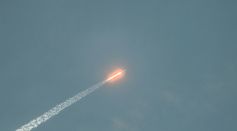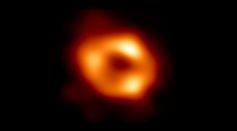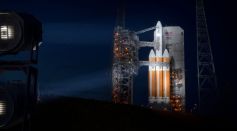SPACE
Metallic Flying Saucer That Comes Out From Cloud ‘Definitive Proof’ We Are Not Alone, UAP Hunter Claims

NASA Warns of ‘Internet Apocalypse’ That May Leave People Without Connection for Months; Parker Solar Probe Tries To Prevent This From Happening

Lunar Weather Explained: NASA Scientist Describes How the Conditions of the Sun Affects the Moon

2 Russian Cosmonauts Finish 6-Hour Spacewalk To Replace Station Hardware, Dispose of Old Gear

SpaceX To Launch 56 Starlink Satellites Atop a Falcon 9 Rocket on Friday: Here's How To Watch It Live for Free
Earth’s Tilts Change Toward Its Orbital Plane Causing Solstice; Watch This Amazing Video To See How It Did
![Astronauts More Susceptible to Infection While In Space [Study]](https://d.sciencetimes.com/en/full/47230/astronauts-more-susceptible-infection-while-space-study.jpg?w=237&h=131&f=f18d16af2a6b4efbef84730138a1c060)
Astronauts More Susceptible to Infection While in Space [Study]
Unusual Brown Dwarf Challenges Astronomical Boundaries Between Stars and Planets

Eerie Echo Reveals Intense Activity of Supermassive Black Hole in the Milky Way's Core
BepiColombo Spacecraft’s Captured Images During Its Third Flyby Reveal Geologic Features on the Surface of Mercury
Ghostly Lightning in Jupiter Captured by NASA Juno Spacecraft; How Does the Space Probe Provide New Insights About the Gas Giant?
White Dwarf Pulsar Spinning 300 Times Faster Than Earth Reveals New Details About Stars’ Evolution

United Launch Alliance Scrubs Delta IV Heavy Rocket's Penultimate Flight, Reschedules Top Secret Spy Satellite Mission
Earth’s Formation Might Have Occurred at a Faster Rate Than Previously Thought, Increasing Chances of Alien Life
Most Popular

Largest Known Volcanic Aquifer Discovered Beneath Oregon's Cascades

New 'Supergiant' Sea Bug Found in South China Sea, Named After Darth Vader

Mediterranean Sea Was Refilled by a Catastrophic Flood Millions of Years Ago

Mysterious Cosmic Waves That Sound Like Birds Detected in Unexpected Space Region




